The best standing desk chairs and stools
Reduce back pain and feel more energetic, by using the best standing desk chairs and stools available today
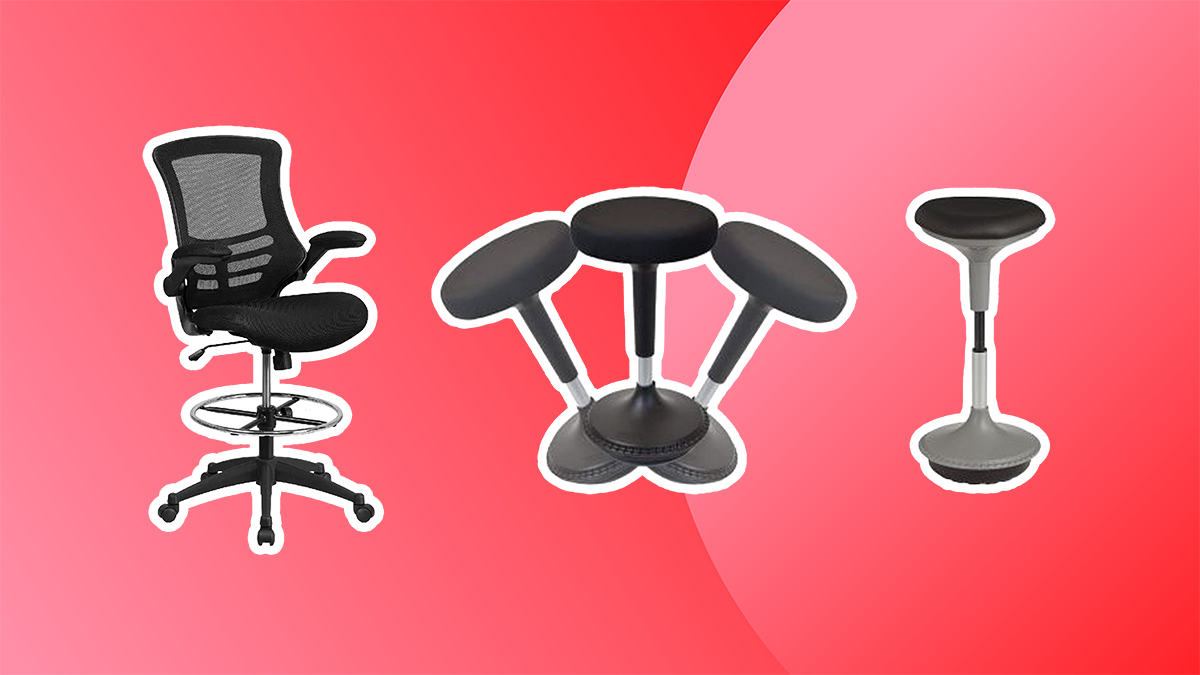
The best standing desk stools and chairs are must-buys if you're going to use a standing desk. And we'd encourage you do so, as it's much better for your posture and stamina to switch between standing, sitting, and what's known as 'active sitting' throughout the day.
Standing desk chairs come in a variety of styles: from ergonomic office chairs for back pain to leaning chairs and adjustable height perches. We've scoured online retailers to select the very best options for you, all providing maximum comfort, support, adjustability, quality, and mobility for your workspace. The ideal companion, in short, to the best standing desks.
So whether you work from home or are shopping for your office, our guide will help you choose the perfect standing desk chair. For other seating options, meanwhile, don't miss our roundup of the best budget friendly home office chairs.
The best standing desk chairs
Why you can trust Creative Bloq
Leaning stools
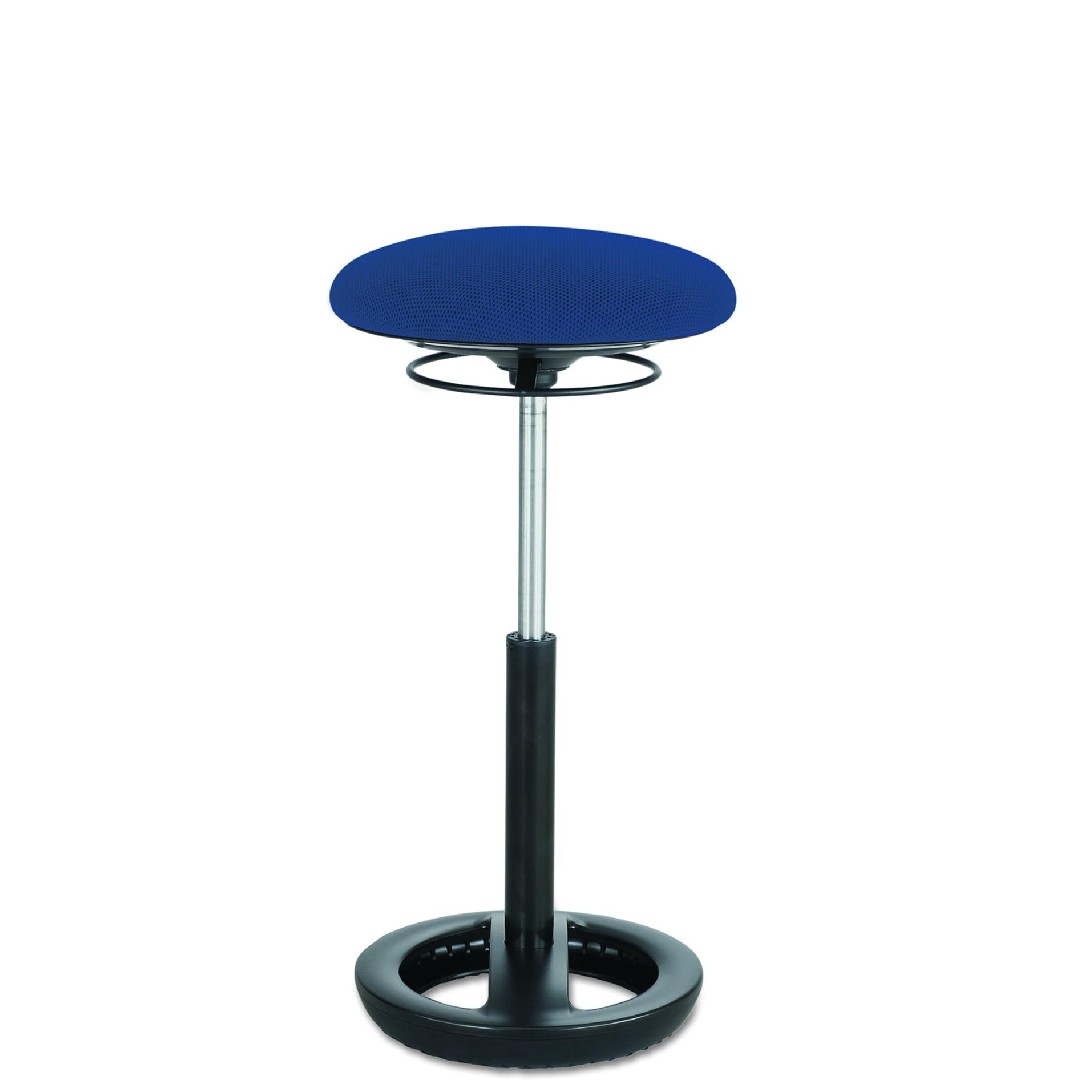
+ Generous height
+ Portable
+ Lightweight
- Not so sturdy
If you want something portable, this is the best choice; an under-seat finger groove makes it easy to move, and it's the lightest chair on our list. It's adjustable, letting you perch, lean or sit as you desire, with a height range of 22 to 32 inches, and swivel through 360 degrees.

+ Low price
+ Comfy seat
+ Easy assembly
- Quite basic
If you're watching your pennies, this is the best cheap standing desk stool. Key features include a moderate weight capacity of 264 lbs, an anti-skid base to protect floors and prevent falling, and full 360-degree horizontal swiveling. The height of the stool is also adjustable, ranging from 24.5 to 27.9 inches.
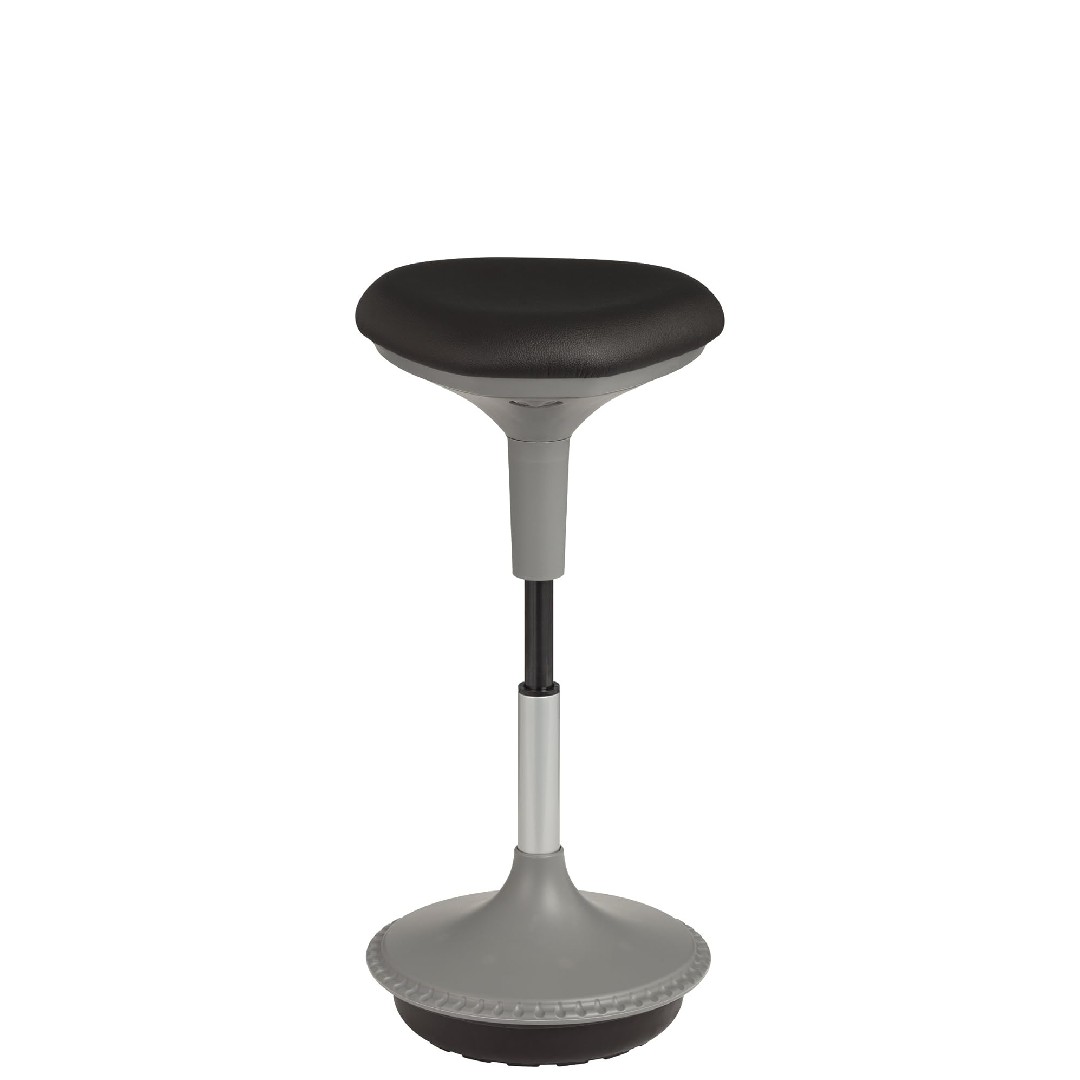
+ Weight support
+ Easy to clean
+ Easy assembly
- Limited height
With a pneumatic gas lift, this stool adjusts from 47 to 71cm (18.5 to 28in), offering a wide range of motion. The comfortable vinyl-covered polyurethane seat is easy to clean, and it has a weight capacity of 120kg (265lbs). While not particularly exciting, it gets the job done effectively.
Drafting chairs
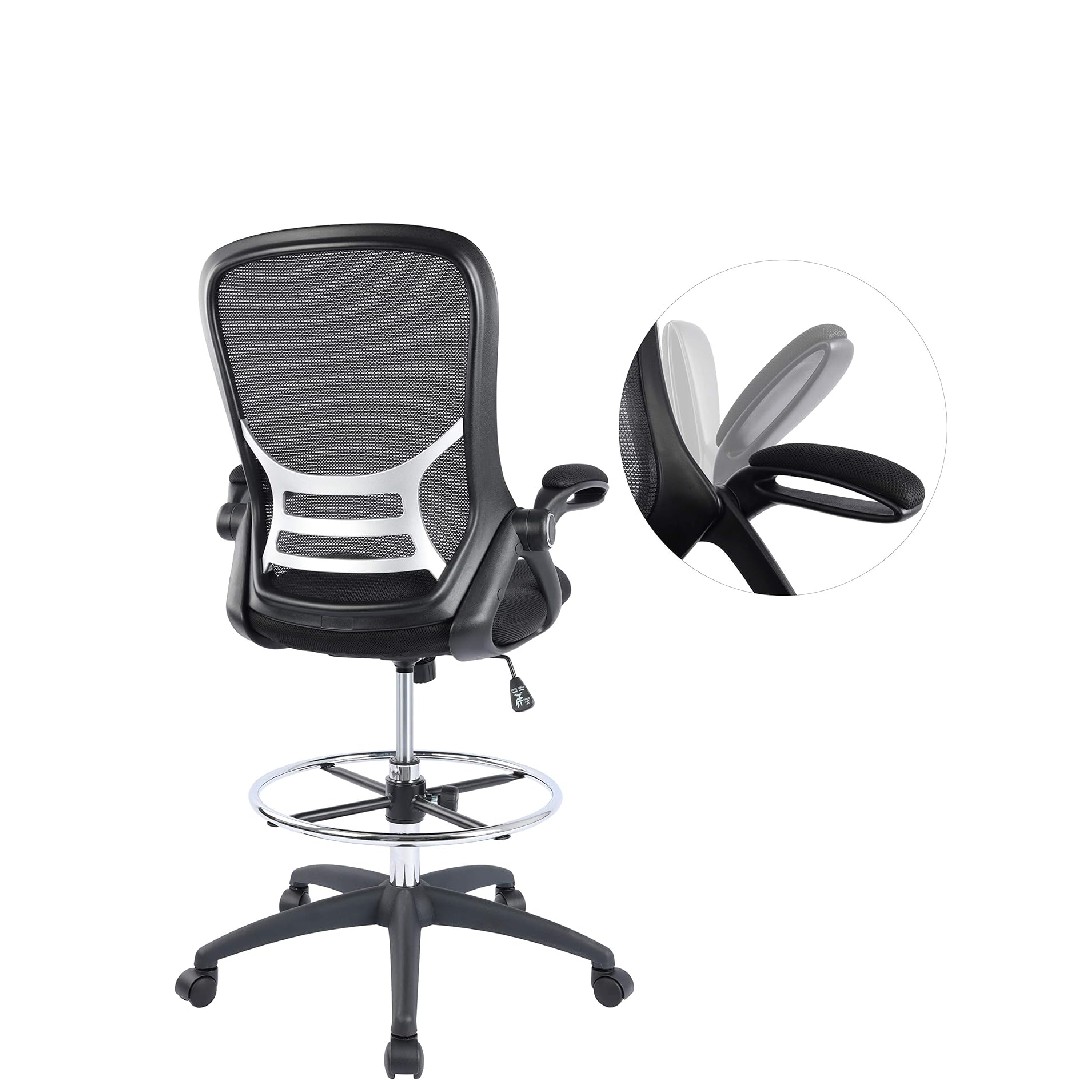
+ Robust
+ Adjustable
+ Comfortable
- Colour options
Hylone offers adjustable height, seat tilt, and tilt tension, along with a breathable mesh back, padded flip-up arms, and a height-adjustable footrest. With built-in lumbar support and a comfortable Waterfall edge seat, it suits various work settings. The chair offers stability, mobility, and a maximum capacity of 129kg (285lbs).
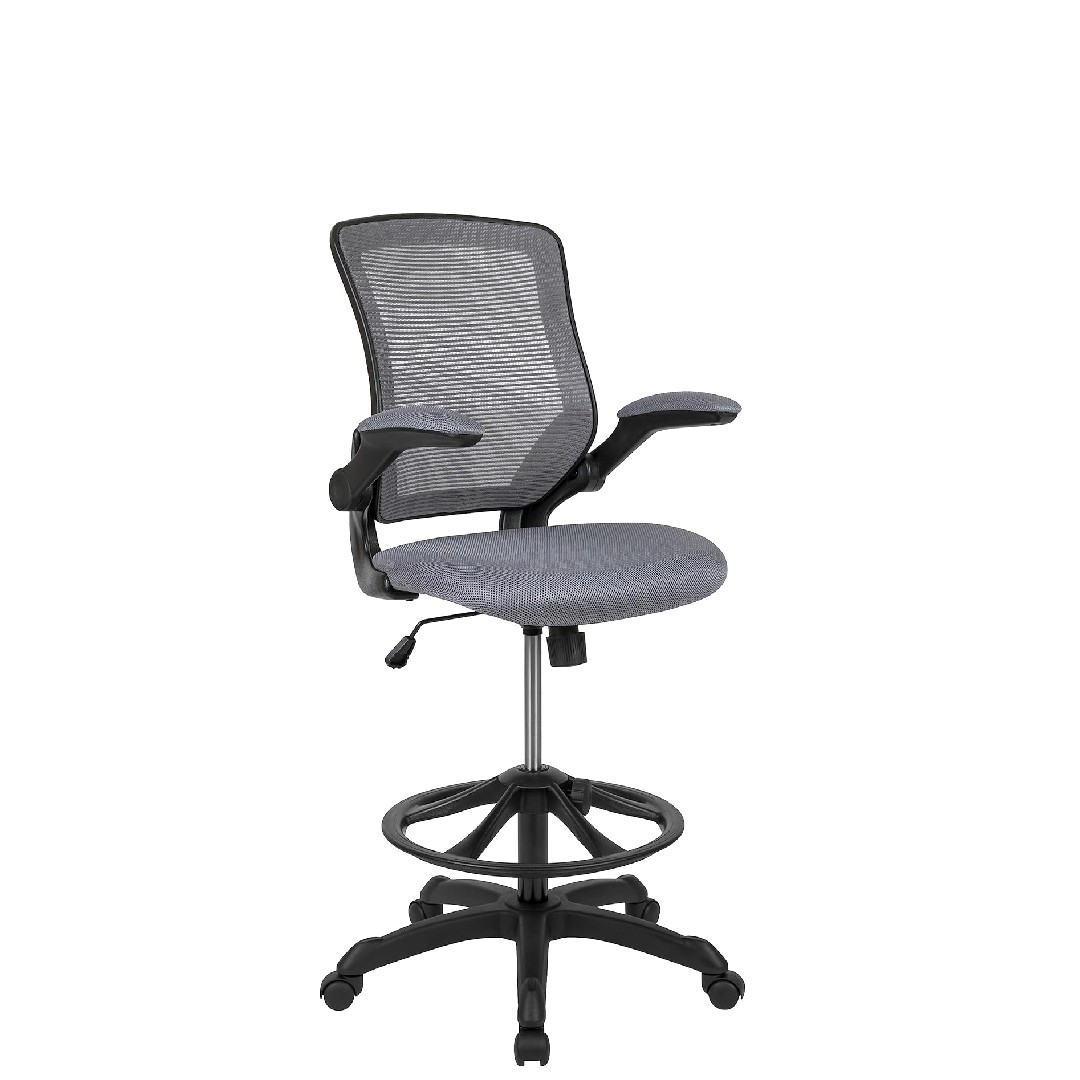
+ Supports 300lbs
+ Adjustable
+ Colour options
- Fiddly assembly
This chair boasts an abundance of features; a ventilated curved back, lumbar support, flip-up arms, wheeled castors, and a circular footrest. With its pneumatic lever, it offers adjustable seat height, and other customisation features include a tilt lock mechanism and tilt tension adjustment.
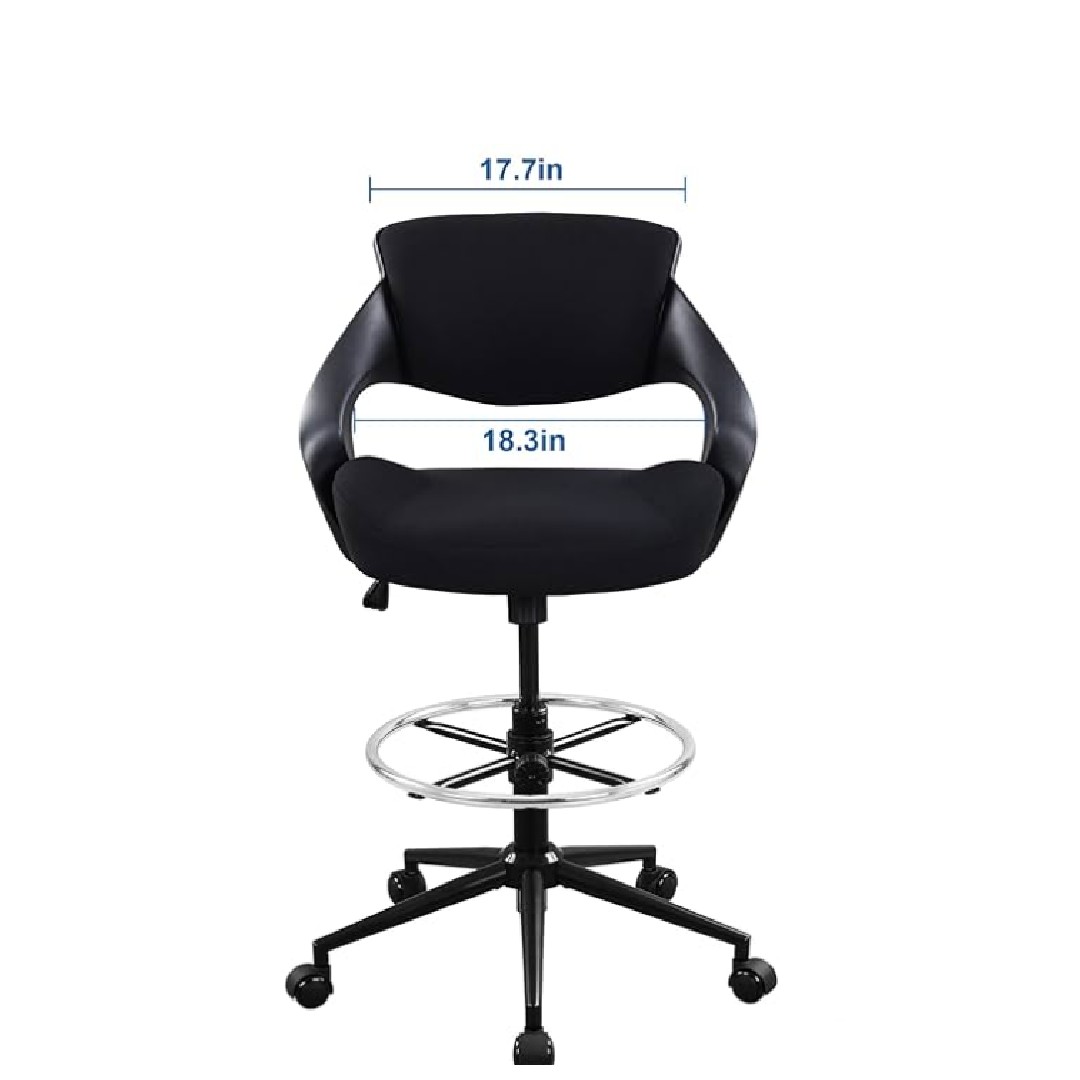
+ Very adjustable
+ Generous height
+ Wide seat
- Assembly is tricky
Here's our pick for taller users. The adjustable height range spans from 36 to 44 inches, and you can customize the seat height, backrest tilt, and footrest position. It also boasts a wide 21-inch deep and 18-inch wide seat to accommodate larger figures and can support up to 350 pounds.
FAQs
What is a standing desk?
A standing desk, also known as a stand-up desk, is a type of desk that allows the user to work while standing up, rather than sitting down. The key features of a standing desk include adjustable height, allowing the user to raise or lower the desk surface to their desired standing height, which helps accommodate people of different heights and allows the desk to be used for both standing and sitting.
What is a standing desk chair?
A standing desk chair, also known as a perch stool or tall chair, is a specialized type of seating solution designed for use with standing desks. The key features of a standing desk chair include an elevated seat height, typically ranging from 24 to 33 inches, which allows the user to sit at a standing desk while maintaining good posture and ergonomic alignment.
These chairs often have a minimal or reduced backrest, or no backrest at all, to encourage the user to maintain an upright, engaged posture rather than leaning back. Like traditional office chairs, standing desk chairs typically feature 360-degree swivel capabilities and casters for easy mobility around the workstation.
Many standing desk chairs incorporate a footrest or foot ring, which provides a place to rest the feet and shift weight while sitting, helping to improve circulation and reduce strain on the lower body.
Why should I buy a standing chair?
The idea behind standing chairs is to accompany a standing desk so that you spend the best part of your working time standing, but you still have the option to sit at regular intervals in order to rest.
"Standing desk chairs are great for improving your posture and general health says James Crow from Posture Stars. "They give you an active support that can keep you upright and able to shift position much more easily than a standard chair. Plus they're fantastic for keeping you lively and alert for your online meetings too."
In short, standing chairs allow you to get the best of both worlds: to use a standing desk for a more active work setup, but also to be able to rest and change your position to avoid getting tired, especially if you're not used to standing up for long periods of time.
"I love the way you can quickly switch from standing to perching, to get a variety of good postures," Crow adds. "And they help to avoid the aching feet that can come from standing at a desk for long periods of time."
What's the point of a standing desk?
The best standing desks have become popular in recent years and for good reason. People have realised that a sedentary lifestyle can cause a wide range of health problems, including back pain and poor posture. Spending more time on our feet can help correct that.
Standing desks are designed with ergonomics in mind, encouraging a more upright posture and reducing the risk of back pain, neck strain, and other musculoskeletal issues associated with prolonged sitting. Using a standing desk can help reduce sedentary behavior and increase physical activity throughout the workday, as you're less likely to remain stationary for extended periods. Standing can also improve blood circulation, which may help boost energy levels and cognitive function.
Many standing desks offer additional features, such as built-in storage, cable management systems, and even treadmill or bike attachments, to further enhance your work experience. The use of standing desks has become increasingly popular in recent years, as more people recognize the potential health benefits of reducing prolonged sitting during the workday.
"Standing desks may be a great solution for those who may not be comfortable sitting, either because of pain or just preference," says Dr Amy Hoover, physiotherapist at P.volve. "Standing vs sitting may also encourage better posture and spinal alignment. Standing allows us to engage more postural muscles, and helps encourage muscular support, and distributes forces throughout our body to lessen stress on one area."
How should you stand at a standing desk?
Using a standing desk doesn't mean you can completely forget about paying attention to posture. You need to be aware of how you're standing, just as you would try to sit in the most healthy way possible in a chair.
"You need to be mindful of your posture when using a standing desk," says Dr Amy. "Try standing with your ears, shoulders, hips and ankles in a line, and keep your joints soft, and distribute your weight evenly between both legs. Moving often is still necessary, and arguably more when you use a standing desk. Doing some waking every 30 minutes can help encourage blood flow and keep your muscles from tightening up."
How to choose the best standing desk chair
When choosing the best standing desk chair, there are several important factors to consider. Firstly, adjustability is key. Look for a chair with a wide range of seat height adjustment, typically between 24 to 33 inches, to accommodate users of different statures and provide the appropriate ergonomic fit at the standing desk. Stability and mobility are also essential, so evaluate the chair's swivel capabilities, caster construction, and overall base design to ensure it can move smoothly yet remain steady during use.
Comfort is another critical consideration, so pay close attention to seat padding, contour, and edge softness, as these elements will impact pressure distribution and bloodflow over extended periods of use. Finally, assess the chair's overall build quality and durability, as a sturdy, well-made standing chair is an investment that should withstand regular daily use.
How we test standing desk chairs
When evaluating standing desk chairs, we use them for prolonged periods while performing common work tasks to assess factors like posture, circulation, and fatigue levels. Key testing areas include seat height adjustment range, swivel and caster functionality, footrest design and stability, material durability, and overall ergonomic fit. We'll also analyse factors like seat padding, backrest support, and weight capacity.
Daily design news, reviews, how-tos and more, as picked by the editors.

Beren cut his teeth as Staff Writer on the digital art magazine ImagineFX 13 years ago, and has since worked on and edited several creative titles. As Ecom Editor on Creative Bloq, when he's not reviewing the latest audiophile headphones or evaluating the best designed ergonomic office chairs, he’s testing laptops, TVs and monitors, all so he can find the best deals on the best tech for Creative Bloq’s creative professional audience.
- Tom MayFreelance journalist and editor
